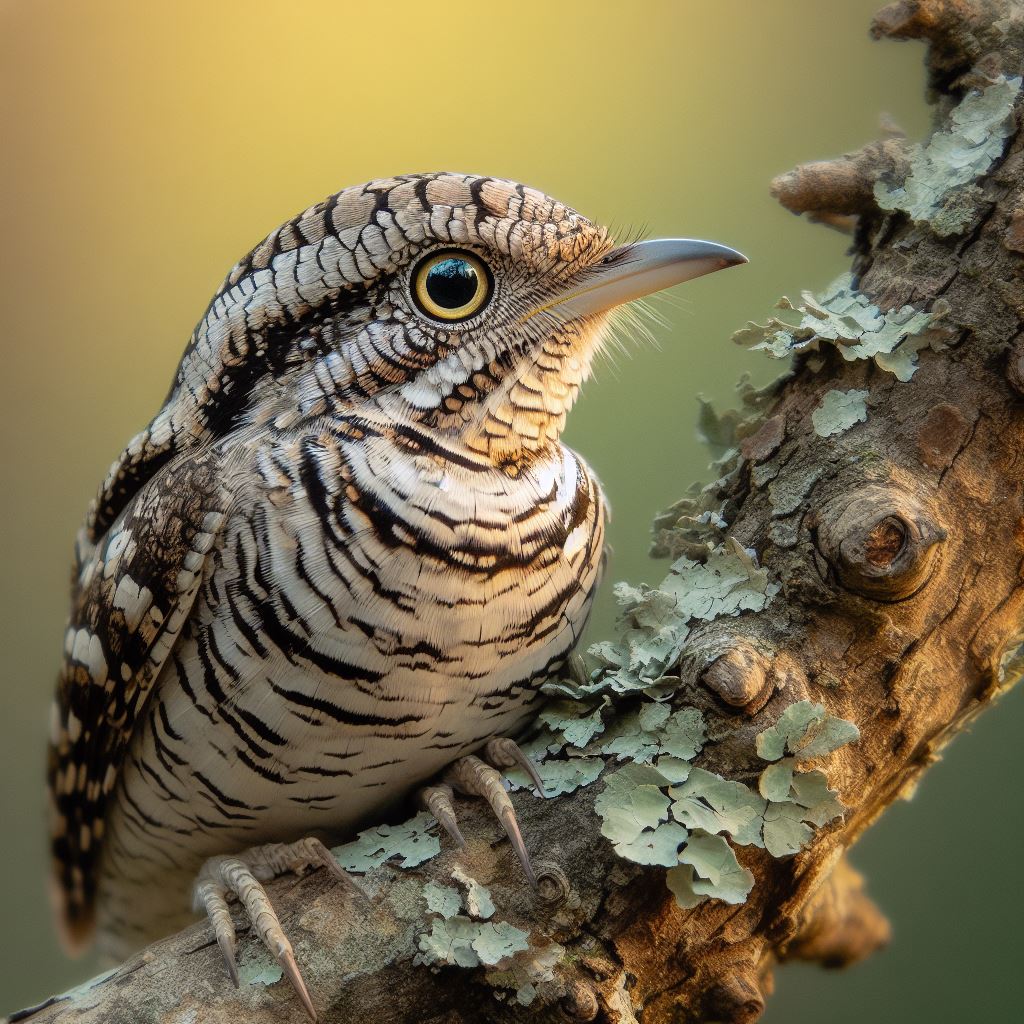Most beautiful small birds - Sykalo Eugen 2024
Eurasian Wryneck (Jynx torquilla)
Identification:
- Species name: Eurasian Wryneck
- Scientific name: Jynx torquilla
- Family: Picidae (Woodpeckers)
- Order: Piciformes (Woodpeckers)
- Subclass: Neornithes (Modern birds)
- Class: Aves (Birds)
Description:
- Size: Small woodpecker, about 16.5 cm (6.5 in) long with a wingspan of 27-29 cm (10.6-11.4 in).
- Body shape: Slender and streamlined, with a long neck, a long, slightly downcurved beak, and a relatively short tail.
- Plumage color:
Barred and mottled patterns of pale brown, rufous, and blackish stripes on upperparts.
Pale underparts with black streaks.
Short, pale brown legs.
Small, dark eyes placed high on the head.
Distinctive feature: Can turn its head almost completely around!
- Beak: Long, slightly downcurved, and pointed, dark grey in color, suitable for probing for insects under bark and in the ground.
Behavior:
- Method of feeding: Primarily insectivorous, catching ants and other insects on the ground or by probing under bark.
- Reproduction: Builds cup-shaped nests in tree cavities or holes in banks. Lays 6-10 white eggs. Both parents care for the young.
- Movement: Migratory, breeding in temperate regions of Europe and Asia and wintering in Africa.
- Communication: Whistling and rasping calls, including a distinctive "wer-wer-wer" during flight.
Ecology:
- Habitat: Open woodlands, orchards, farmland, and parks with scattered trees.
- Diet: Primarily ants, but also beetles, caterpillars, and other insects.
- Hunting methods: Often forages on the ground, using its long tongue to extract ants from the soil. May also probe under bark or search for insects on low branches.
Distribution: Found across Europe, Asia, and parts of North Africa. Breeds in temperate regions and migrates south for winter.

The Eurasian Wryneck, a quirky and often overlooked resident of European and Asian woodlands, might seem like a shy and unassuming bird at first glance. But beneath its cryptic plumage and sluggish movements lies a treasure trove of fascinating facts and surprising adaptations that will leave you captivated by this enigmatic avian oddball:
The Name Game: Where to begin? Their scientific name, Jynx torquilla, hints at their unique neck-twisting ability, while their common name evokes a sense of wry humor, perfectly encapsulating this bird's quirky charm.
Masters of Mimicry: Don't underestimate the Wryneck's vocal talents! They are not just adept singers with a surprisingly loud and complex repertoire, but also skilled mimics. From the calls of other birds to even the hisses of snakes, they can deceive predators and rivals with remarkable accuracy. Imagine them as feathered ventriloquists with built-in sound effect libraries!
The Neck Twist Trick: But the showstopper is undoubtedly their namesake move. When threatened, Wrynecks can twist their necks up to 180 degrees, peering over their backs with bulging eyes and hissing like snakes. It's a chilling but undeniably impressive defense mechanism, leaving predators confused and often abandoning the attack. Talk about feathered exorcists with built-in swivel necks!
Bug Banquets Underground: Unlike most birds that forage on leaves and branches, Wrynecks are insectivores extraordinaire. They use their long, curved beaks to probe deep into the soil, unearthing hidden grubs and larvae with impressive efficiency. Imagine them as feathered earthworms with built-in miniature excavators!
Unexpected Nest Architects: Nest-building isn't their forte. Wrynecks prefer the convenience of borrowing in old woodpecker holes or natural cavities. Talk about feathered opportunists with built-in minimalist tendencies!
Curious Communal Tendencies: Although not as common as in other species, Wrynecks sometimes exhibit cooperative breeding. Helpers, often older offspring, may assist the breeding pair in raising chicks, offering extra food and protection. It's a feathered commune with built-in childcare!
Hidden Vulnerability: Sadly, Wryneck populations are declining due to habitat loss and changes in agricultural practices. Conservation efforts are crucial to ensure these neck-twisting enigmas continue to grace our woodlands with their quirky charm and hidden talents for generations to come.